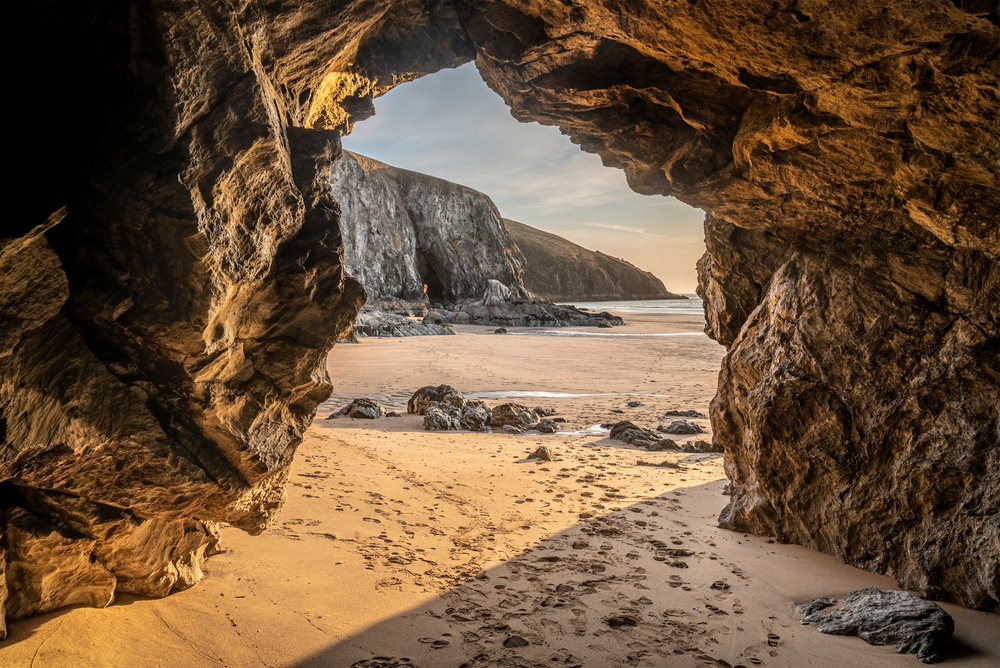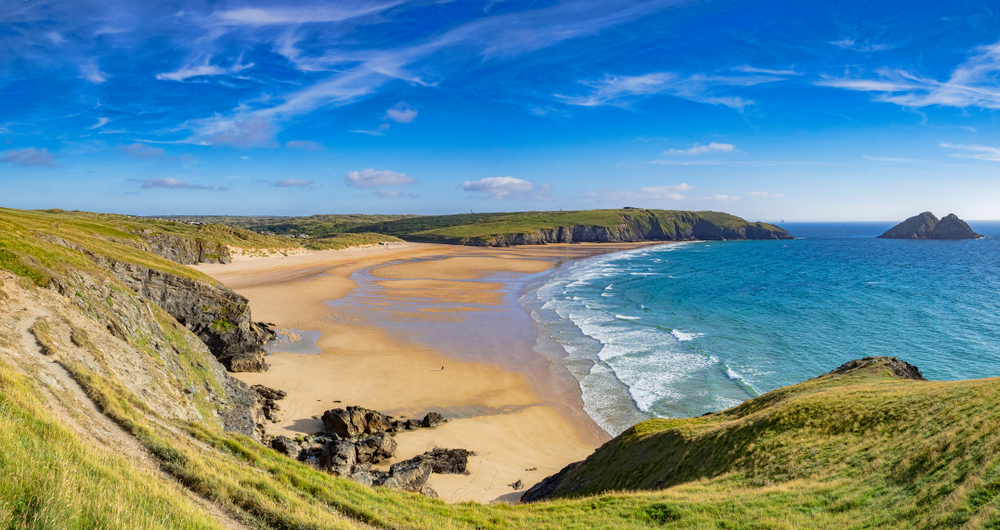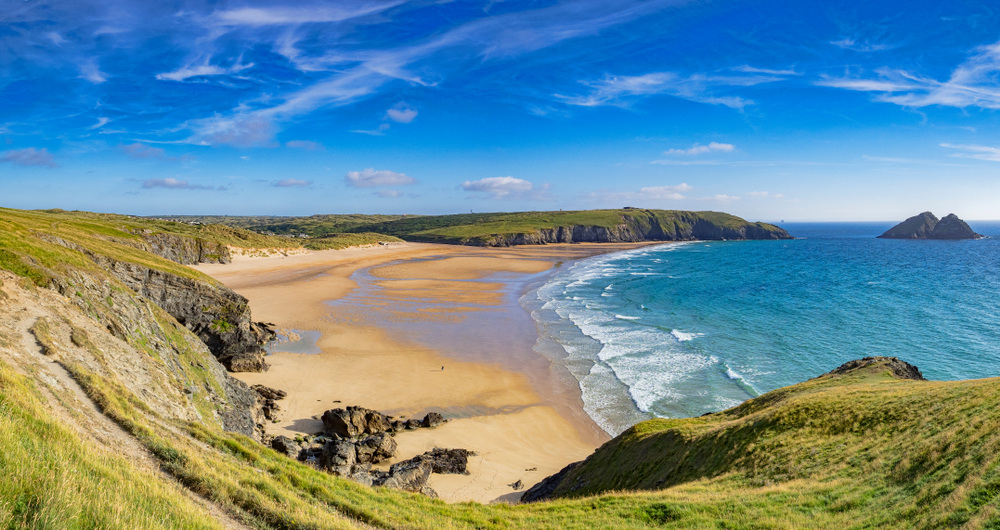Holywell Bay is one of the most recognisable beaches in the whole of Cornwall. The distinctive twin islands just offshore and the rolling dunes have appeared in both film and television but beyond the images of Ross and Demelza Poldark frolicking in the waves, this beach is also bursting with history and legend!
Holywell Bay is a wide sandy beach sandwiched between to rocky headlands, Penhale Point and Kelsey Head, on Cornwall’s north coast, just south of Newquay and about 20 miles from Padstow. It is very popular with surfers and families alike for its beauty and endless rolling waves.
Holywell Cave
The beach takes its name from the famous holy well that can be found in a cave at the far end of the sand. The cave is full of crystalised rock formations which have formed bowls that collect the spring water seeping through the rocks above. It is a truly otherworldly place.
These wonderful rock basins stand in tiers and the rich minerals in the water mean that they glisten in your torchlight in shades of pink, green and white. It is a magical sight that has been attracting visitors for hundreds, if not thousands, of years. The heavy mineral content of the water means that many people believed that the well had curative and restorative qualities and they would collect the water to drink as a sort of cure-all.
Finding the cave and the holy well can be a bit of an adventure. It can only be reached at low tide and can involve a bit of a scramble over rocks, but it really is a very special place and well worth seeking out.

Holywell Bay has become something of a Hollywood
The iconic islands that sit just out to sea have been given various names including the Carters, The Fishtail Rocks and the Gull and Chick. They are now owned by the National Trust and are usually covered in nesting seabirds. These giant rocks are a favourite for sunset pictures and the whole picturesque scene has attracted numerous movie directors over the years – Holywell has become something of a Hollywood!
In the opening scene of the 2002 Bond film Die Another Day the beach was supposed to be replicating the coast of North Korea! The “skeet surfing” scene in the 1984 comedy Top Secret! starring Omar Sharif and Peter Cushing was also filmed here and the beach stood in for California on that occasion.
Many of the scenes in the popular BBC series Poldark were filmed in the dunes, on the beach and also in the caves. Then in 2015 the lead actor Aiden Turner was back again when the BBC mini-series based on Agatha Christie’s And Then There Were None was filmed at Holywell, as well as at Mullion Cove and Kynance.
Penahale Point
The amazing sand dunes that back the length of the beach are thought to have been formed around 5000 years ago and make up one of the largest dune systems in Britain with a precious and unique ecology. They are also a bit of a playground. Whatever the waves are like offshore, locals and visitors alike can enjoy a little sand-surfing from their heights!
Hidden beyond the dunes up on Penhale Point are the derelict remains of what used to be Penhale Army camp. Developed by the Military of Defence back in 1939 the camp was used to train soldiers for warfare. During the Second World War up to 700 men at a time passing through it gates.
Despite being long abandoned there is still evidence of the gun sites, searchlight positions, pillboxes and trenches. The majority of the site is currently occupied by abandoned Nissen huts built by the Americans who were stationed here in the lead up to the D-Day landings.
Some of the men who came to Penhale were returning from the battlefields of Europe and it was used as somewhere that they could come to rest and recuperate. Almost like a holiday camp beside the sea for these battle-weary troops.
Unfortunately however this and the nearby airfield made the site a target of the German Luftwaffe. Tragically in July 1941 23 servicemen who were recuperating at Penhale after being evacuated from the beaches of Dunkirk were killed when an enemy aircraft dropped bombs on the camp.
Penhale continued to be used intensively by the military for training after World War II with that legacy only coming to an end in 2010.
Kelsey Head
Kelsey Head, named after an ancient, long since vanished manor, is a Site of Special Scientific Interest because of its wide range of coastal plants and flowers and colonies of seabirds. Seals can also often be seen bobbing about close to its rocky shores.
The highest point of the headland is home to a huge prehistoric earthwork that is the remains of an Iron Age Cliff castle built around 2000 years ago. Today it is still possible to make out the 170m long earthen defensive ramparts that would have separated the headland from the mainland.
In September 1920 the steamer Sandfly was passing Kelsey Head when she suddenly sprang a leak. The 32 ton ship, that had been on her way to Wales, sank like a stone, she went down so quickly that the crew didn’t even have time to grab their personal possessions. Fortunately, all five men onboard took to the ship’s little rowing boat as she disappeared beneath the waves and then they rowed themselves to Newquay for a stiff drink.
Holywell Bay is a truly stunning part of the Cornish coast, within walking distance of Polly Joke and Crantock beaches. There is a large National Trust carpark and refreshments are available at Holywell in the 13th century Treguth Inn or the nearby Smuggler’s Den Inn, both atmospheric, olde-worlde thatched pubs.

